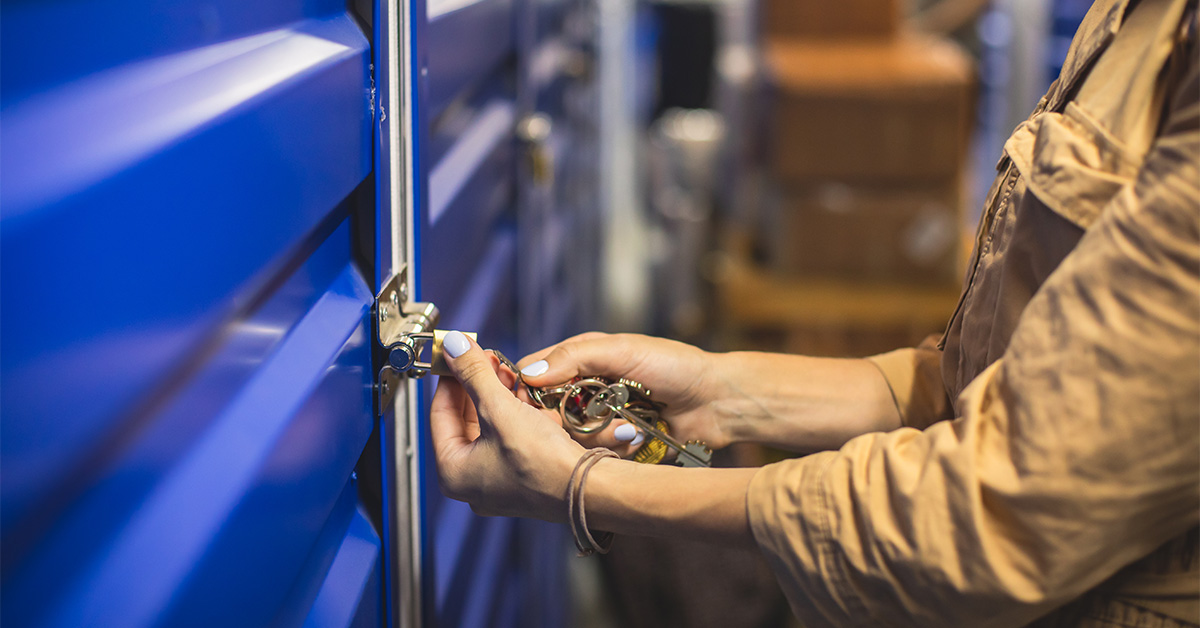We’re just coming off the extreme market dislocation caused by the COVID-19 pandemic, and now find ourselves in an uncertain macroeconomic and high inflationary environment. This has prompted institutional investors, high net-worth investors, and family offices alike to reevaluate their portfolios and reassess their market risk. Many investors are now focused on bringing stability to their portfolio rather than chasing aggressive growth, which tends to come with more risk.
Investment in real estate can bring increased stability to a portfolio in a volatile macro-environment. In fact, when it comes to risk-adjusted returns, real estate outperforms the S&P 500. The case becomes even stronger when you evaluate how real estate performs in past recessions compared to the stock market—when real estate values fluctuate negatively, they decrease 43% less than the S&P 500.
However, real estate is nuanced, and not all asset classes are created equal. For example, asset classes that operate on shorter-term leases—like self storage and multifamily—can be especially attractive in the current environment because of their ability to serve as a hedge against inflation. Self storage leases are often month-to-month and multifamily average one year, whereas retail, office, and industrial leases generally range anywhere from three to 10 years. The shorter lease terms allow for more frequent and intentional rent adjustments that can account for—and even offset—rising costs during inflationary environments.
Self storage has been around for about 50 years and is considered one of the newer asset classes; however, its staying power and investment soundness has been frequently tested during this short time. With the sudden advent of the COVID-19 pandemic in March 2020, many wondered if commercial real estate markets would be affected the same way as in the Great Recession of 2007-2009. Calendar year 2021 started out very cautiously in self storage, as rental move-ins were fairly stagnant and there was no spring college student influx as in years past.
Ultimately, the pandemic has helped introduce self-storage to many people that never needed the service before, creating a new “propensity to rent” factor. The need for self-storage is still stimulated by the four “D’s”: Death, Divorce, (natural) Disaster, and Displacement, but the American public has found ways to use self-storage that we in the industry never dreamed of 30-35 years ago. Occupancies in facilities across America have risen 4-6% on average once the pandemic restrictions were lifted from many businesses. It certainly helped that most states declared self storage an “essential business” in order to keep doors open to a public that was learning how to work, learn, and socialize remotely from home. The new displacement of employees from office to home, along with a robust housing industry fueled by record low interest rates, and the Millennial generation coming of age; and people relocating from center city to suburban, rural, and even resort areas, all contributed to a sharp increase in demand for self storage. These changes introduced a new segment of the population that had never used it before.
All of these factors then increased self storage occupancies, helped new facilities rent up faster, and increased revenues while interest rates and capitalization (cap) rates remained at historic lows. Low cap rates result in higher values and many long-term owners of self storage began taking advantage of the market by placing their facilities—and even entire portfolios—for sale to the tune of $19 billion in transactions for 2021.
Self-storage has performed so well through various economic cycles and downturns that it has earned the term “recession-resistant” real estate. Institutional money has acknowledged and rewarded the national self-storage operators by investing hundreds of millions of dollars into it and positioning the two largest operators on the New York Stock Exchange.
Commercial real estate went through a tremendous growth period the six years prior to the COVID-19 pandemic. However, the industry has lived up to its reputation during the pandemic by remaining “insulated, but not immune” to economic disruptors. It continued to produce strong returns on investment for their shareholders going forward as many new participants began to use self-storage for the first time.
As concerns about a recession loom, interest rates rise, and inflation persists, the macroeconomic environment looks very different for the self storage industry than it did even just six months ago. Despite all of that, I believe self storage will continue to be an attractive investment, particularly in times of uncertainty, and maintain its reputation for being resilient amidst volatility.






